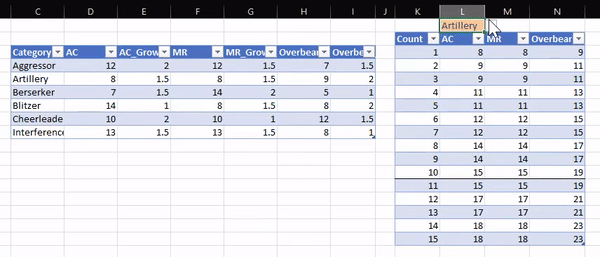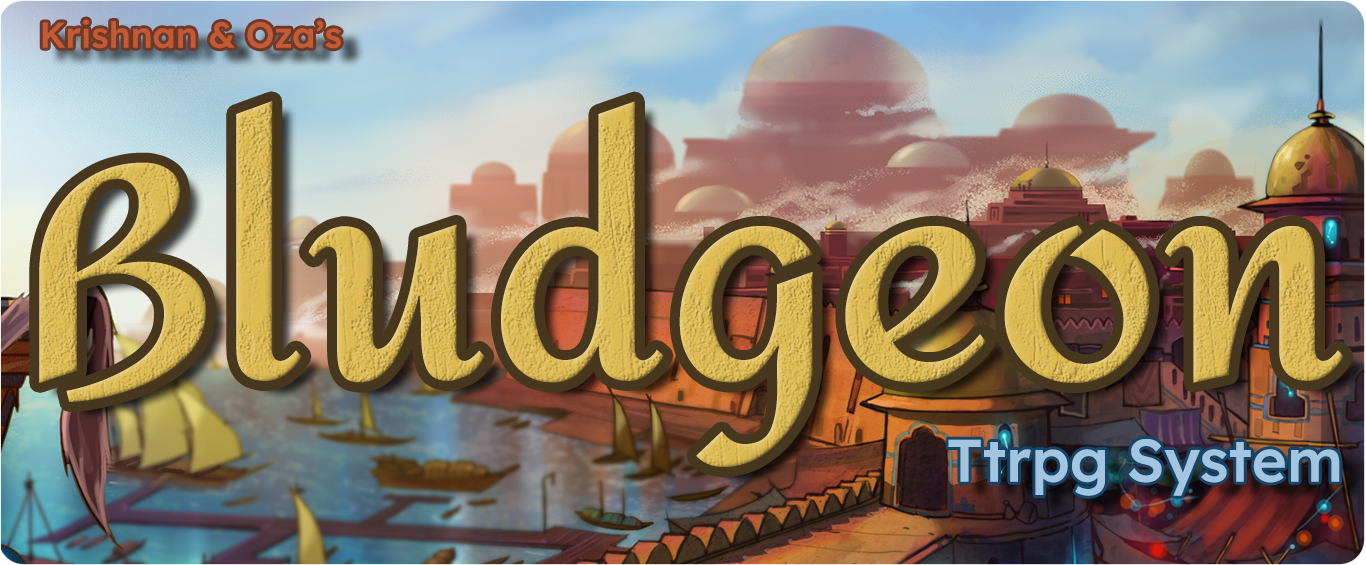Devlog 05: Monsters & Enemies
Hello Bludgeoneers!
Let's talk about Enemy Balance today. It's been the one part of the game that I've handled myself, calling upon years of practice and - for lack of a better term -vibes, but as I move to take this game from a hobby home game to a product with players globally, I need to do more. A lot more.
Specifically, I need to formalize said 'vibes' and ensure that there is a logical way with which to design adversaries to drop into combat. You need good enemies so that the player feel great about all their own cool abilities. A combat focused ttrpg is only going to be as strong as its bad guys, after all.
Formalizing a design always works backwards. You define your goals and then find the best possible ways to get there.
For Bludgeon, the goals of enemy design were:
- Be easy to calculate stats.
- Provide guidance for generalized behaviour.
- Make enemy creation Modular.
Additionally, as with all things Bludgeon, I want to ensure that the path to customizing content is obvious and clear.
---
To address Goal 1, I immediately decided to create a formula that would make it easy to quickly calculate monster Hp.
This was, quite literally, the first thing I did. A unified calculation that took the following factors into considerations:
- Player Level
- No. of Players in the Encounter
- Monster Type
- Roughly how many rounds the monster was meant to survive
In 'Type' we get our first round of categorization.
Categorization is good. It allows you to designate objects and ensure uniformity between those of like designations. So, for this I decided upon the following categories:
- Minions - Throwaway monsters that acted as an exception to the rule. They just needed to be hit to kill, but fulfill the role of swarmers.
- Standard - Intended to be the most used Category.
- Mini-Bosses - Tougher enemies to throw into a mix of the above when you really want to spice things up.
- Bosses - Self evident.
In providing a 'no. of turns' input, I put the power in creator hands for how long they want an encounter to last. This variable isn't precise, as nothing can be in this setting, but it does provide a rough estimate of what to expect.
And with all the Inputs weighing in, I'm confident in finding a solution to HP that is within the wheelhouse of expectations. That is, expectations a creator would have of how long a monster ought to last against a particular party.
---
Addressing Goal 2 was a mix of Math and Roleplay. Yet again, however, the call is for categorization. By breaking enemies into categories, I can define generalized behaviours that guide a Bludgeon Master's decisions when controlling an enemy. It let's be set down priorities that an archetype would have.
For roleplay considerations, its enough to provide guidelines but not so stringent that you cannot add your own twist to each. I chose to create archetype names that were as indicative of their playstyle as their description text would be, so that there was as little ambiguity in the expected functionality of the character. I also wanted to move away from the typical MMO terms. The big four, if you're familiar.
For matters of balance and math, it allowed me to use these categories as a basis of scaling AC, MR, and Overbears. If I knew a character's archetype was that of a Tank, I knew it would be apt to provide them with higher AC & MR but lower Overbear. I'd scale them accordingly, as well.
The Archetypes I landed on were:
- Aggressor
- Artillery
- Cheerleader
- Blitzer
- Berserker
- Interference
And to help me visualize their scaling and compare them, I used handy old excel.
---
The last Goal builds off a concept I've had for quite a while. This is kind of how I think of about monsters and the creation of new ones. The best analogy would be Frankenstein's Monster, or even a video game's character creator. Only, every cosmetic provides some gameplay options.
You could even say this is an extension of the thinking behind Racial Adaptations.
In short, to be modular, I wanted creators to be able to think about what their monster or enemy looked like and prescribe functionality to match it. From my end, I'll have to create a list of 'body parts', each with some kind of function or attack.
The way I see it, doing so helps players visualize the creature, but also find cohesion between what's being described and what the creature can do.
A list of monster parts to choose from is also expandable, both by me and other creators. It also doesn't mean that you have to stick with what's in the book. Like everything Bludgeon, the idea is to take the system and mod it to best suit yourself and your players. If the functionality for a certain aspect doesn't work for you - change it to something that does.
As an example:
- Eye Stalks - This creature can target enemies that may be behind meager cover without suffering any penalties.
- Body Slime - The Slime that coats this creature's body is caustic in nature. Unarmed strikes against it deal 2 Direct Damage to an attacker.
- Ember-moles - These dark ridges on the character's skin burn with a deep red flame. This creature has Fire Resistance 2.
And so on.
---
Next Steps and Realizations
While working on the formalization of this system, I realized a few things that have become 'TASKS' that have been added to my list of things to get around to.
For starters, I'm considering whether or not to tie Archetypes into the Hp calculation. It definitely makes sense and would add more of a wrinkle between Archetype HP, where right now they may be a little too homogenized.
The second is the big task of thinking of monster parts and functionality for them.
The last is a realization and task - That the body parts and/or functionality need a tagging system. This is so that Archetypes can list what kind of tags they're make up should have and how many of each type. As before, these aren't going to be hard and fast rules but more like guidelines so that creators can change things up to surprise their players.
Especially the ones that read ALL THE RULES!
---
Well, that's it for today's Design Ramble. I thank you for reading so far and I hope that this has been insightful to you in some way. I realize that there are parts of this write up that are vague. This is intentional.
The actual formulae and breakdowns will appear in the Rulebook eventually.
This write up was just so that you could follow along with the thinking behind certain decisions.
Files
Get Bludgeon the TTRPG
Bludgeon the TTRPG
Tactics focused D20 TTRPG System with Asynchronous Class Mechanics inspired by Indian Pop Culture & Mythology.
| Status | In development |
| Category | Physical game |
| Author | tacticsnchai |
| Genre | Adventure, Role Playing |
| Tags | bludgeon, Fantasy, Indie, mythology, south-asian, Tactical RPG, Team-Based, Tabletop role-playing game |
| Languages | English |
More posts
- Devlog 15: State of Team/Project UpdateSep 03, 2025
- Devlog 14: Quick-Start & Other NewsJul 13, 2025
- Patch 1.5: Monsters, Lore, & HouseKeepingJun 15, 2025
- Devlog 13: UKGE 2025 RetrospectiveJun 07, 2025
- Devlog 12: UKGE 2025May 26, 2025
- Devlog 11: Discord Server Now LiveApr 21, 2025
- Devlog 10: Moving to a Paid PDFFeb 02, 2025
- Devlog 09: 2024 End UpdateDec 26, 2024
- Devlog 08: The Hiatus Strikes BackNov 03, 2024
- Devlog 07: 1 Year RetrospectiveMar 11, 2024

Leave a comment
Log in with itch.io to leave a comment.